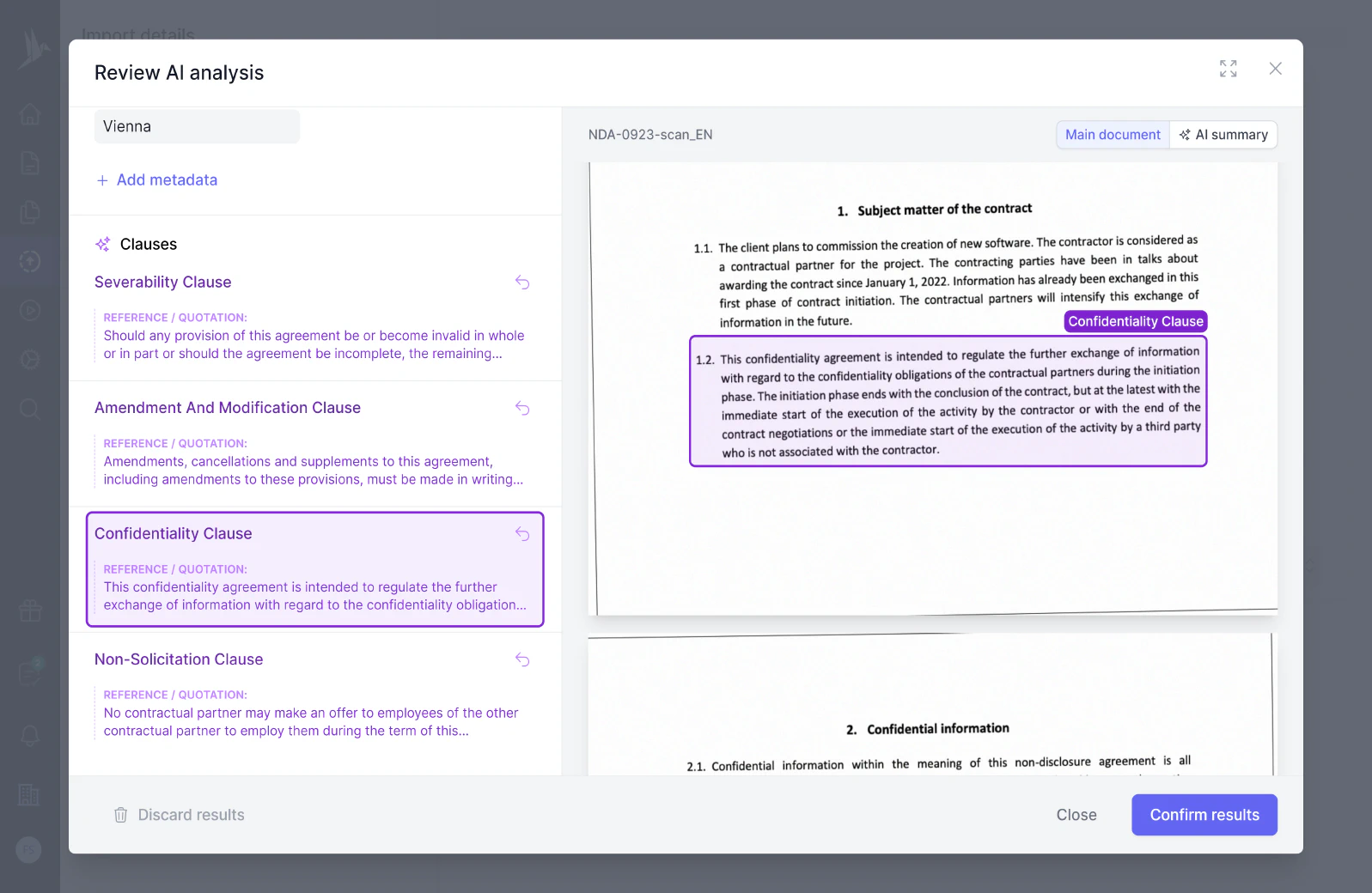Acknowledgement and acceptance
The Acknowledgement and Acceptance clause in a contract affirms that all parties involved fully understand and agree to the terms and conditions outlined within the document.
Accord and satisfaction is a legal contract principle where parties agree to settle a dispute by accepting a performance different from what was originally agreed upon, effectively discharging the original obligation. It involves two key elements: the "accord," which is the new agreement, and the "satisfaction," which is the execution of that new agreement, ultimately resolving the dispute.
This Change Order shall constitute a full and final settlement and accord and satisfaction of all effects of the change reflected in this Change Order upon the Changed Criteria and shall be deemed to compensate Contractor fully for such change. Initials: /s/ SMS Contractor /s/ DC Owner
Pursuant to Section 6.4 of the Agreement, this Change Order shall not constitute a full and final settlement and accord and satisfaction of all effects of the change reflected in this Change Order upon the Change Criteria and shall not be deemed to compensate Contractor fully for such change. Initials: Contractor Owner
This Change Order shall not constitute a full and final settlement and accord and satisfaction of all effects of the change reflected in this Change Order upon the Changed Criteria and shall not be deemed to compensate Contractor fully for such change. Initials: _____ Contractor _____ Owner
Accord and Satisfaction is a legal concept which is used to resolve a debt or contractual dispute between parties. It involves an agreement (the accord) where the parties agree to settle the dispute under new terms, which differ from the original obligations. Once the agreed terms in the accord are fulfilled, satisfaction is said to have been achieved, effectively releasing the original contractual obligations.
Accord and Satisfaction should be used when parties wish to settle a dispute or modify obligations without resorting to legal actions or nullifying the entire contract. It is typically used:
To write an Accord and Satisfaction, you should:
Example:
“This agreement serves as an accord between Party A and Party B where Party A agrees to receive $500 as full and final satisfaction of the previously agreed amount of $1000. Upon completion of the payment, Party B’s obligations are considered fully satisfied.”
Accord and Satisfaction can be found in various types of contracts, primarily where the parties have ongoing or evolving obligations such as:
Accord and Satisfaction serve as a flexible tool to efficiently manage and resolve disputes within varied contractual contexts.
Dive deeper into the world of clauses and learn more about these other clauses that are used in real contracts.
The Acknowledgement and Acceptance clause in a contract affirms that all parties involved fully understand and agree to the terms and conditions outlined within the document.
An "Acts of God" clause exempts parties from fulfilling their contractual obligations due to extraordinary events or natural phenomena beyond their control, such as earthquakes, floods, or other natural disasters. This clause helps allocate risk and protect parties from liability when unforeseen events prevent them from executing their contractual duties.
An addendum is a supplementary document added to an existing contract that modifies, clarifies, or adds new terms or conditions without altering the original agreement's fundamental nature. It ensures that any changes or additional provisions are formally incorporated and acknowledged by all parties involved.
Try our AI contract analysis and extract important clauses and information from existing contracts.
< <
Fill out the form and we will get in touch with you to give you a personal, customized demo of fynk.
Greetings!
I'm Markus, co-founder of fynk. After you've submitted the form, I'll swiftly get in touch with you.
Also, right after you submit your details, you can pick a time that works best for you for our meeting.

